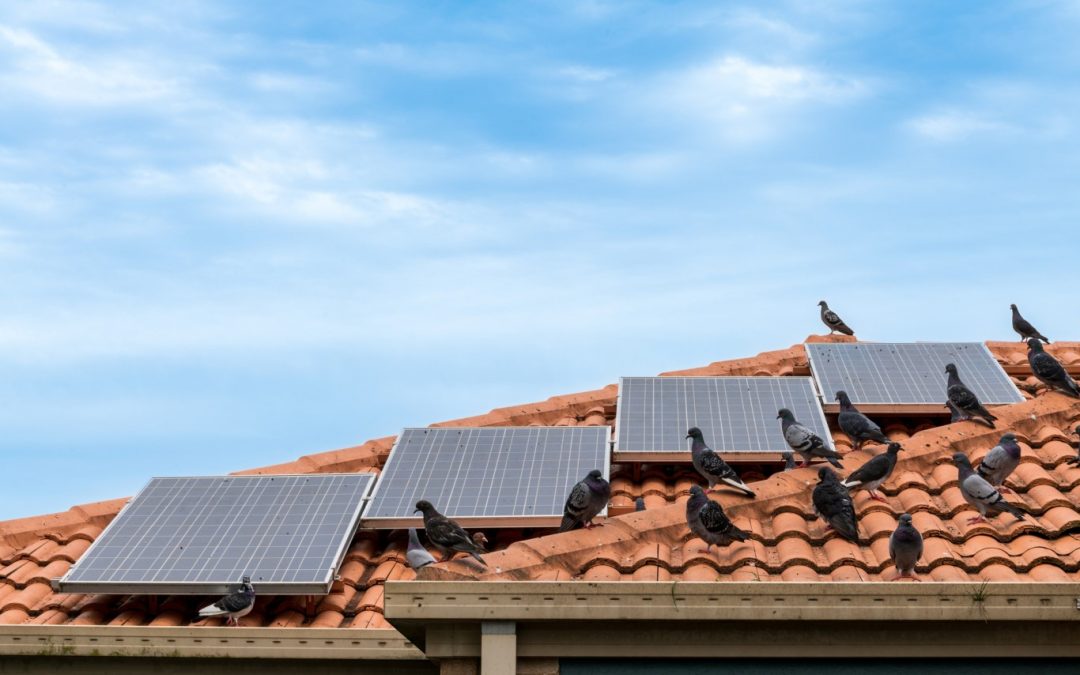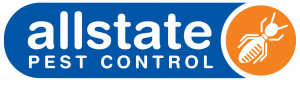
How to prevent birds from nesting in your roof
With the winter chill setting in, the last thing you need to worry about is a flock of pest birds sheltering in your roof. They’re messy, noisy and cause damage to your building.
Continue reading to find out how you can stay free of pest birds this winter season.
What questions will this article answer?
Why birds are nesting in your roof
Your roof provides an ideal space for pest birds to shelter from the elements, and offers protection to build nests.
How to tell if you have a bird outbreak
You notice many birds on your roof as well as bird droppings, frequent chirping noises and bird nests.
Problems you may face during a bird infestation
Birds are noisy, their droppings can cause property damage, they can spread diseases and initiate secondary insect outbreaks.
7 ways to prevent birds from nesting in your roof
Remove food and water sources, conduct regular roof maintenance, install visual deterrents and use repellent sprays, gel and ultrasonic devices.
Professional bird proofing methods
Allstate uses OvoControl, bird netting, spikes, wire and electric tracks. We also offer solar panel cleaning and proofing, as well as property cleaning and maintenance services.
Choose Allstate for fast and humane bird management
We’re available 24/7 for all urgent bird advice and offer treatments which do not physically harm birds.
Why are pest birds attracted to my home in winter?
Well adapted to survive the harsh winter elements, pest birds such as pigeons, sparrows, starlings and mynas can thrive in homes and businesses across Adelaide.
Similar to people, pest birds are drawn to the warmth and shelter that your home provides when the mercury drops.
With the ability to squeeze through tiny gaps between loose roof tiles, they make their way inside your roof space, roof ventilators, attics and walls to build nests, lay eggs and raise their young. Another popular cosy nesting spot is underneath solar panels.
If you’ve got food and water sources available, this makes your home even more appealing for pest birds, who survive by scavenging a wide range of food. From small insects to diving in rubbish bins to food scraps left on the ground, they are definitely not fussy eaters!
How to spot a pest bird outbreak
If you’re wondering whether or not you have some bird visitors or a full-blown pest bird outbreak, here’s some signs to look for:
Large numbers of pest birds around your home
You may find them perching and roosting on your roof, chimney, verandah, balcony, antennae, window panels, solar panels, gutters or wooden support beams.
Persistent chirping noises
Birds, and especially chicks, chirp to communicate with each other.
Bird droppings
An accumulation of messy brown, black or white droppings on the ground is a clear sign of a pest bird outbreak.
Nesting material
Pest birds are clever at crafting sturdy nests from various foraged scraps, such as twigs, leaves, straw, pine needles and grass. So look out for nests underneath solar panels, inside your roof, or even tucked between some wooden beams.
Control pest birds fast. Speak to an expert today.
 or
or
Problems caused by a pest bird outbreak
There are many problems that a pest bird outbreak can cause in your home or business:
- Constant chirping sounds can be distracting and disruptive
- Pest bird droppings are an eyesore and contain corrosive compounds that can damage your roof, buildings, air conditioning unit, solar panels and outdoor furniture
- Sticky and slippery bird droppings are a health and safety hazard for stairs, fire escapes and footpaths
- They can carry and spread germs and diseases such as ornithosis (Bird Fancier’s Lung), cryptococcosis, salmonella, E-coli bacteria, histoplasmosis and aspergillosis
- Pest birds carry parasites such as bird mites, bed bugs and ticks, which can trigger secondary pest outbreaks and allergiess
- Birds can contaminate food and water contamination through droppings, nesting material and feathers
- The accumulation of feathers and nesting material in your gutters and drains can cause water blockage, leaks and overflow
- Pecking and fouling in your garden can ruin your plants, fruit trees and veggie patch and leave a mess behind
- Pest birds can be aggressive and breed fast, so if you notice fewer native birds in your yard, chances are that pest birds have taken over the space as their territory
5 ways you can prevent pest birds this winter
We recommend the following tips to help protect your home or business from a pest bird outbreak:
Tip 1: Remove all sources of food and water
Pest birds are expert scavengers and have a wide and varied diet which can include common things you would find in an average suburban backyard. This includes flowers, fruit, vegetables, and insects. Pet food and water bowls, as well as food scraps in compost piles and rubbish bins are also a popular choice.
While bird feeders and bird baths can attract native birds, they’re also likely to capture the interest of pest birds. Where possible, we recommend having less available food and water and keeping compost and waste tightly sealed and covered.
Tip 2: Regularly inspect your home for access points and proof them
Pest birds range in size and have the ability to squeeze into small spaces to enter your home. So, it’s best to check your roof for gaps between loose tiles, uncovered vents and other small openings and either seal them off or cover them with a fine mesh. Overhanging branches and vegetation can also encourage birds to nest close to the building.
Tip 3: Locate and remove nesting material
As territorial creatures by nature, pest birds carefully choose places to nest, roost and breed. Besides harbouring different types of parasites, germs and diseases, nests also provide a safe place to lay and incubate eggs, which attracts more birds and worsens an outbreak.
Regular yard maintenance and keeping your garden tidy and relatively free of small loose twigs and leaves can also help reduce the availability of nesting material.
Tip 4: Clean and disinfect the affected area
Not only do pest birds make a mess with feathers, germ-infested nesting material, debris and droppings, they also leave behind pheromones, which attracts other birds. That’s why it’s always important to clean up the mess from any pest bird infestation.
Allstate offers professional cleaning and property maintenance services to refresh, rejuvenate and sterilise the mess from pest birds. Our services include gutter, roof void and water tank cleaning or pressure washing to keep your property looking sparkling clean and pest-free.
Tip 5: Solar panel cleaning and proofing
With the rise in solar panel installations, pest birds have had increasingly more options for safe and comfortable nesting spots on roofs all around Adelaide.
Unfortunately, they are also responsible for causing messy stains and damage to expensive solar panels, resulting in the loss of efficiency.
You can avoid pricey repair bills with Allstate’s solar panel cleaning and proofing service.
After managing the pest bird problem, we conduct a thorough clean of the area and then install a UV coated mesh skirting to the sides of your panels. This hard-wearing mesh prevents birds from nesting underneath your panels, enabling them to function at their best.
Protect your home from pest birds today
 or
or
Professional pest bird management
At Allstate, we provide a range of innovative and humane pest bird management methods Depending on the extent of the outbreak, we may use a combination of approaches to ensure that the root cause of the problem is fixed as quickly as possible.
These include:
- Installing roosting deterrents such as bird spikes, netting, wire, jolt
- Physical control measures such as trapping
- OvoControl – an RSPCA approved and AI-powered modern long-term bird control solution
To learn more about a tailored bird control program for your home or business, contact Allstate for a comprehensive pest bird assessment today.
For safe and fast pest bird control, choose Allstate
At Allstate, we understand pest bird behaviour so that we can manage all infestations from their source, and use a range of innovative and modern treatments to help prevent the problem from returning.
Since 1986, we’ve assisted homes and businesses across all suburbs of Adelaide with pest bird outbreaks of all sizes in commercial, residential and industrial settings.
Available 24/7 for advice and solutions, we offer payment plans to help keep you and your family protected from pest birds for good.




